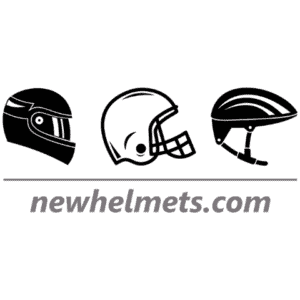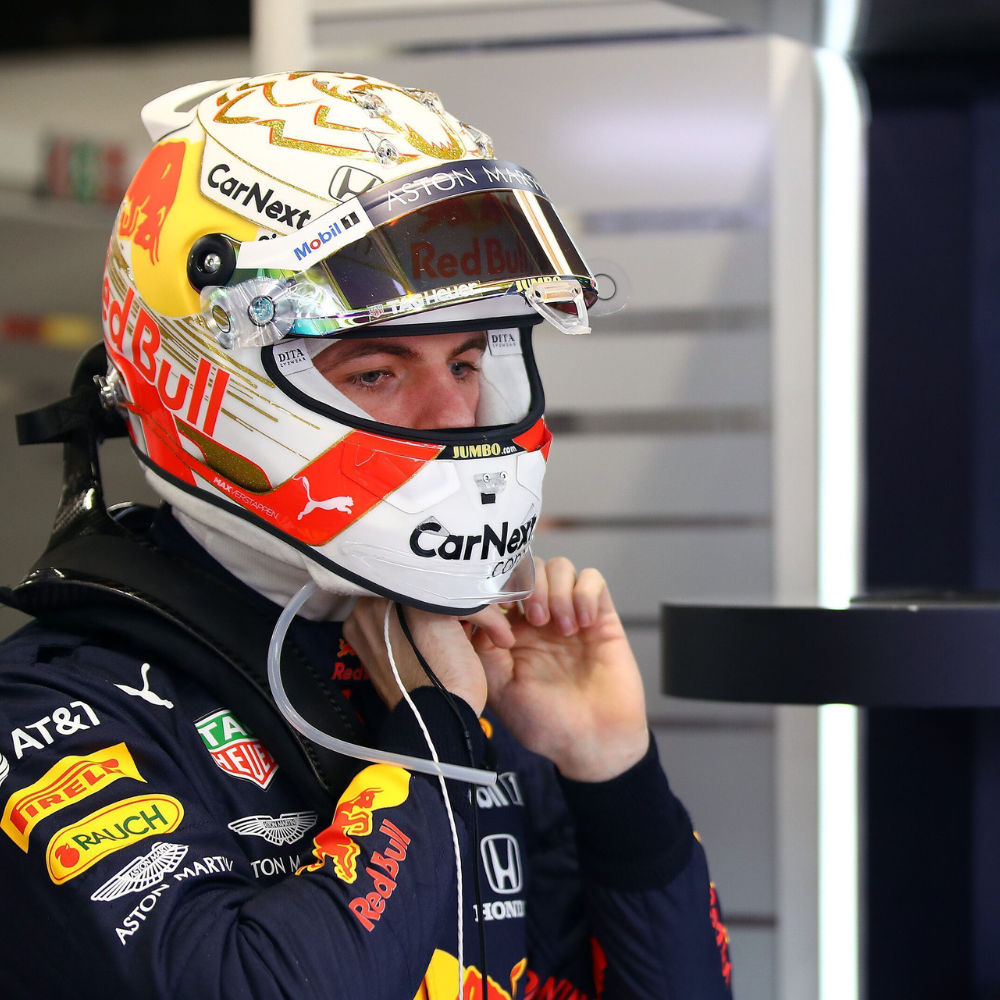Formula One (F1) racing is one of the world’s most exciting and high-speed forms of motorsport. At the heart of this thrilling sport are the drivers, who risk their lives every time they take to the track. One of the most critical pieces of equipment these drivers use to protect themselves is their helmet. In this article, we will take a closer look at everything you need to know about F1 racing helmets, including the materials and technologies used to make them, the safety standards they must meet, and the design elements that make them unique. Whether you’re a fan of the sport, a driver yourself, or just curious about the technology behind these incredible helmets, this article will give you a deeper understanding of this crucial piece of equipment.
Where are formula one helmets made?
A variety of manufacturers, including Bell, Schuberth, and Stilo, make Formula One helmets. These companies have factories in various locations worldwide, including the United States, Italy, and Germany. The exact location of a manufacturer’s factory may depend on the specific helmet model being produced.
Formula One (F1) racing helmets are required to meet strict safety standards set by the FIA (Fédération Internationale de l’Automobile). These standards are in place to ensure that the helmets provide adequate protection for the drivers in the event of an accident.
The FIA standard for F1 helmets is called the FIA 8860-2018. This standard is based on the Snell SAH2010 standard and includes additional tests and requirements specific to F1 racing.
Some of the vital safety requirements that F1 helmets must meet include:
- Impact protection: The helmet must be able to withstand multiple impacts from different angles and at different speeds.
- Penetration resistance: The helmet must resist penetration from sharp objects, such as debris on the track.
- Fire resistance: The helmet must withstand flame exposure for a certain period of time without breaking down.
- Visor clarity: The visor must provide clear visibility for the driver and must not fog up or scratch easily.
- Retention system: The helmet must have a secure retention system, such as a chin strap, to keep it securely in place in the event of an accident.
How do formula one helmets withstand fire?
The specific fire test that F1 helmets must pass is called the “flame Spread Test.” The helmet is exposed to a flame for a specified period of time, usually around 45 seconds, and the helmet must not catch fire or break down during the test.
The helmets are made of fire-resistant materials such as carbon fiber and aramid fibers that can withstand high fire temperatures. The visors are also made of fire-resistant materials and are designed to remain closed in the event of a fire to protect the driver’s face from flames and heat.
Additionally, the F1 helmets use a fire-retardant coating on the inside of the helmet to prevent the spread of flame internally, and the helmet’s ventilation systems avoid the accumulation of heat.
Overall, the F1 helmets are designed and tested to provide the highest level of protection in the event of a fire to ensure the driver’s safety.
Are formula one helmets heavy?
An F1 helmet IS typically lightweight, with most weighing between 1.2 and 1.5 kilograms (2.6 to 3.3 pounds). That is because the lighter the helmet, the less stress it will put on a driver’s neck and head, which can be beneficial during long races. The helmet’s weight is also an essential factor in the car’s aerodynamics, as a heavier helmet would increase the car’s weight, which can negatively impact performance. The advanced composite materials used in the construction of F1 helmets also help to keep the weight down while maintaining high levels of protection.
How do formula one helmets differ from regular helmets?
Formula One helmets are designed to be highly protective. They are tested to withstand various impacts and extreme conditions specific to the sport of Formula One racing. These helmets differ from regular helmets in several ways:
- Materials: Formula One helmets are made from advanced composite materials such as carbon fiber and Kevlar, which are lightweight and offer high levels of protection.
- Safety Standards: F1 helmets have to pass a series of stringent safety tests set by the FIA (Fédération Internationale de l’Automobile), which include penetration, impact, and fire resistance tests. These tests are more rigorous than the tests for regular helmets.
- Ventilation: F1 helmets are designed with multiple vents to allow air to flow through the helmet, keeping the driver cool during a race.
- Aerodynamics: F1 helmets are designed with aerodynamics in mind to minimize wind resistance and drag which could affect the car’s performance.
- Design: F1 helmets are designed to be distinctive and often feature intricate designs and paint schemes, which make them stand out on the track.
- Weight: F1 helmets are typically lightweight, with most weighing between 1.2 and 1.5 kilograms (2.6 to 3.3 pounds). This is to minimize the stress on the driver’s neck and head, which can be beneficial during long races.
Which is the most popular formula one racing helmet?
It’s hard to determine which Formula One helmet is the most popular, as it can depend on the individual driver’s preferences and personal sponsorships. Some drivers have their own custom designs for their helmets, and these designs may be popular among fans of that specific driver. However, some manufacturers such as Bell, Schuberth and Stilo are popular among F1 drivers and teams. These manufacturers produce high-quality helmets that many drivers in the sport use, and they have a reputation for providing excellent protection and performance.
Do formula one drivers choose their own helmets?
Yes, Formula One drivers typically have the freedom to choose their own helmets, as long as they meet the safety standards set by the FIA (Fédération Internationale de l’Automobile). Many drivers choose to stick with a specific helmet brand or model that they have used throughout their careers, while others may switch to a different brand or model based on personal preferences or sponsorship agreements. The helmet is an essential part of the driver’s equipment, both in terms of safety and personal branding.
Which brands advertise on the helmets of formula one drivers?
Formula One drivers often have a variety of sponsors that advertise on their helmets. These can include car manufacturers, energy drink brands, and other companies that are involved in the sport. Some of the brands that are known to advertise on F1 helmets include:
- Puma: They have a partnership with Scuderia Ferrari and their logo is often on the top of the driver’s helmet
- Mobil 1: They have partnership with Mercedes team and their logo is often featured on the side of the helmet
- Shell: They have partnership with Scuderia Ferrari and their logo is often featured on the side of the helmet
- LG: They have partnership with Red Bull Racing and their logo is often featured on the side of the helmet
- Ray-Ban: They have partnership with Scuderia AlphaTauri and their logo is often featured on the side of the helmet
- Oakley: They have partnership with Red Bull Racing and their logo is often featured on the side of the helmet
Keep in mind that partnerships and branding change over time, and this list may not be exhaustive or up-to-date.
How many helmets do formula one drivers use in a season?
Formula One drivers typically use multiple helmets throughout the course of a season. The exact number of helmets used can vary depending on the driver and the number of races in a season.
Each driver usually has a primary helmet that they use for the majority of the races, which is often referred to as their “race helmet”. This helmet typically features their personal design and colors.
In addition to the race helmet, drivers may also have a few “spare helmets” that they use in case of damage or if they want to change the design. Spare helmets are also used in practice and qualifying sessions, as well as in testing.
Also, many teams and drivers have a “Tribute helmet” which is used in specific races to honor a person, team or event, this helmets usually have a different design than their main helmet.
All of these factors considered, it is not uncommon for a Formula One driver to use anywhere from 4 to 8 helmets over the course of a season.
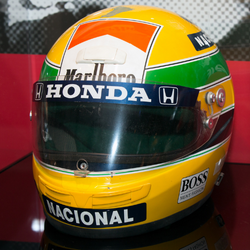
The most famous formula one helmet in the world?
There are many famous Formula One helmets that have been used by drivers throughout the history of the sport. However, one helmet that is considered to be one of the most famous is the one worn by Ayrton Senna. Senna, who was a Brazilian racing driver and considered one of the greatest Formula One drivers of all time, used a distinctive yellow, green and white helmet throughout his career. The helmet design featured the colors of the Brazilian flag and it was made by Bell Helmets.
Senna won three Formula One World Championships for McLaren in 1988, 1990 and 1991, and he is widely regarded as one of the greatest drivers in the history of the sport. He died in an accident during the 1994 San Marino Grand Prix at Imola. The helmet is considered a symbol of Senna’s legacy and it is remembered as one of the most iconic helmets in the sport’s history.
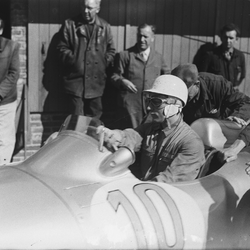
How have formula one helmets improved through the years?
Formula One helmets have undergone significant improvements over the years to provide better protection for drivers and meet the evolving safety standards set by the FIA (Fédération Internationale de l’Automobile). Some of the key improvements in F1 helmets over the years include:
- Materials: The use of advanced composite materials such as carbon fiber and Kevlar, which are lightweight and offer high levels of protection, has become widespread in F1 helmet construction. These materials have replaced the traditional materials like fiberglass, which were heavier and less protective.
- Safety Standards: The FIA has implemented increasingly stringent safety standards for F1 helmets over the years. These standards now include penetration, impact, and fire resistance tests, as well as tests for visibility and ventilation.
- Ventilation: F1 helmets now feature multiple vents to allow air to flow through the helmet, keeping the driver cool during a race. This is a vital feature as it helps to prevent driver fatigue and improve performance.
- Aerodynamics: In recent years, F1 helmets have been designed with aerodynamics in mind, to minimize wind resistance and drag which could affect the car’s performance.
- Design: F1 helmets have become more distinctive and feature intricate designs and paint schemes, which make them stand out on the track. This is also a way for drivers to express their personality and create a personal brand.
- HANS (Head and Neck Support) : Since the early 2000s, the FIA has made it mandatory for drivers to wear the HANS device, which helps to protect the driver’s head and neck in the event of an accident.
These improvements have helped to make F1 helmets safer and more protective for drivers, and they continue to evolve to meet the ever-changing needs of the sport.
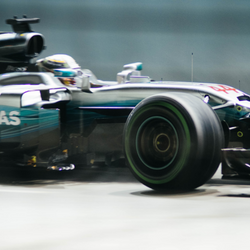
What does the future of formula one racing helmets look like?
The future of Formula One racing helmets looks to be focused on continuing to improve safety and protection for drivers. Some of the key areas of development that are likely to be focused on in the future include:
- Materials: Continue to develop and use advanced composite materials such as carbon fiber and Kevlar that can provide even higher levels of protection and impact resistance.
- Safety Standards: The FIA will continue to revise and update safety standards for F1 helmets, which will likely become more stringent as new technologies and materials become available.
- Aerodynamics: F1 helmets will continue to be designed with aerodynamics in mind to minimize wind resistance and drag, which could affect the car’s performance.
- Design: F1 helmets will become more advanced in terms of design, the use of augmented reality and digital displays could be seen in the future, and this could allow drivers to have more information at a glance and communicate with their teams more efficiently.
- Biometrics: Helmets will increasingly include sensors that can monitor the driver’s vital signs such as heart rate, blood pressure, and body temperature, which can help teams to monitor the driver’s physical condition and make decisions about their fitness to race.
- Lightweight: F1 helmets will continue to be developed to be lightweight, this will help to reduce the stress on the driver’s neck and head, which can be beneficial during long races.
Overall, the future of Formula One racing helmets will be focused on continuing to improve safety and protection for drivers, while also incorporating new technologies and materials to enhance performance and design.
